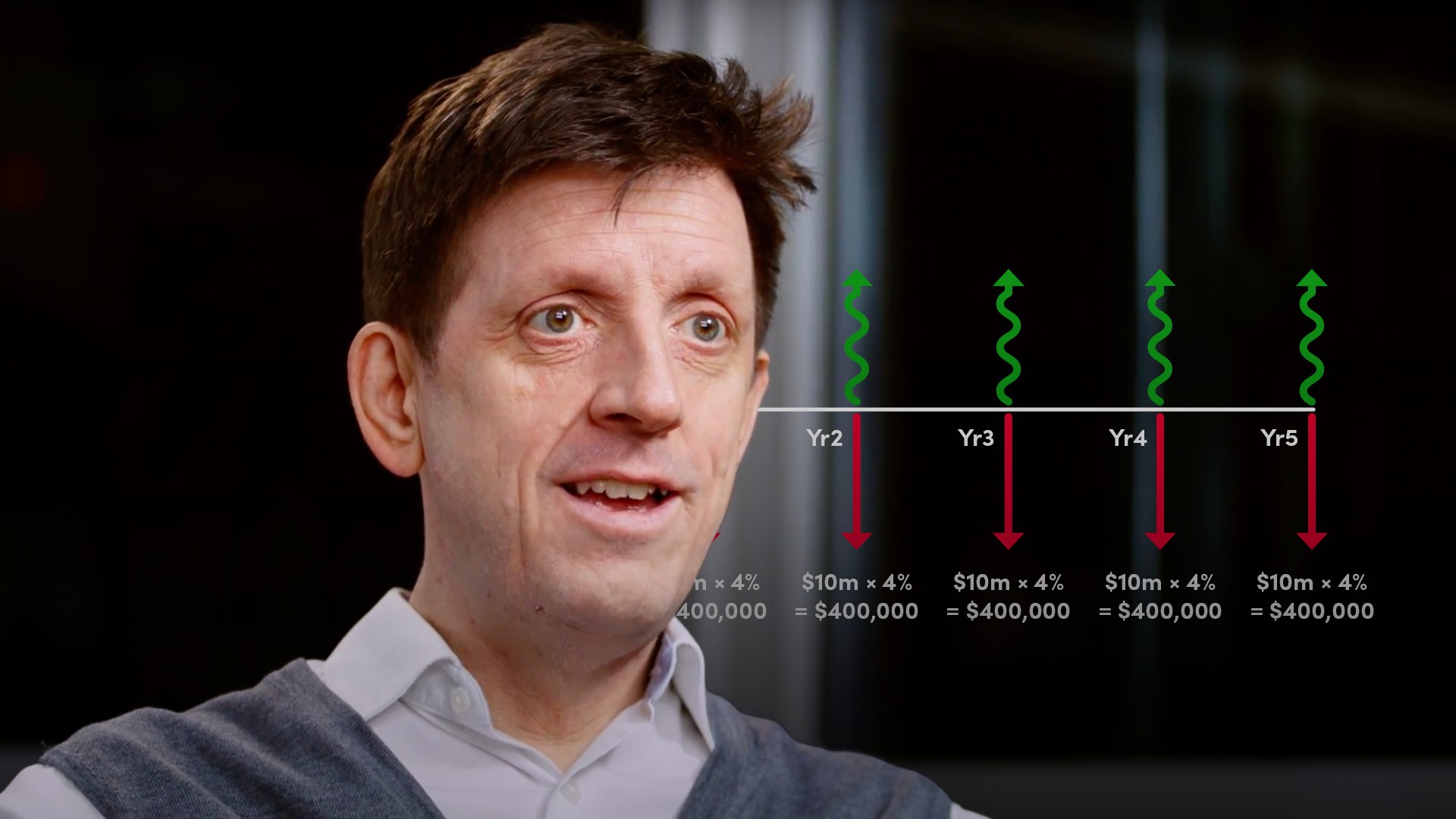
The Role of Interest Rate Swaps in the Bond Market

Lindsey Matthews
30 years: Risk management & derivatives trading
In this video, Lindsey explains interest rate swaps in various examples including as a series of forwards, as bonds and as FRNs.
In this video, Lindsey explains interest rate swaps in various examples including as a series of forwards, as bonds and as FRNs.

The Role of Interest Rate Swaps in the Bond Market
15 mins 11 secs
Key learning objectives:
Define an interest rate swap
Identify the way FRA is similar/different to swaps
Identify the way swaps are similar to par bonds
Overview:
Interest rate swaps are derivatives. Like most derivatives, they allow users to alter risk exposure without making an investment. They are about moving risk rather than raising or investing capital. They also share similarities to a series of forwards and par bonds.
What is an interest rate swap?
If an investor has for example a fixed rate bond, and they would rather have a floating rate bond, they might sell a fixed rate bond and replace it with a floater. This instrument is called the interest rate swapUsing the example below, what swap cash flows are being paid out?
- The investor is paying a fixed rate of 4%, annually for 5 years. They are receiving a 1 year floating rate, which changes every year, for 5 years. Let’s say the swap is on a face amount of $10million
- The investor will pay out 4% times $10m times a 1 year day count fraction - which is $400,000 - every year for 5 years. These cash flows being paid out are agreed upfront, at the start of the trade
In general interest rate swaps, when is the floating rate fixed and paid?
As with the vast majority of interest rate swaps, the floating rate is observed and fixed at the beginning of each period and paid or received at the end of the period. The rate is fixed each period by observing an index of interest rates (LIBOR).If LIBOR = 3%, what is paid out at the end of the first year?
For the first year, the investor will be paying out the 4% fixed rate and receiving the 3%. With $10m as the notional of the swap, then the first payment, at the end of the year, would be 1% of $10m for 1 year which is $100,000 paid out.Why would the investor enter into a transaction where they are paying out 4% and receiving only 3%?
The investor expects the floating payments to be higher in the future than the 3% they are receiving for the first period. The rates may not move up, however, the investor is doing the trade because they want to change from fixed to floating rate - and so this variability of cash flows in the future is part of what they are looking for when they do the tradeIn what way are FRA similar to swaps?
A swap is like a series of forward rate agreements. If you buy the FRA, you will receive a payment if the rate ends up above the fixed rate you bought at. This is like paying fixed and receiving floating for one period of a swap. Hence, a swap is like a series of FRAs.In what ways are FRA different to swaps?
In the FRA, the net patent is discounted back and paid upfront - at the beginning of the period. Each of the FRA trades trade at the market forward rate, and so has a zero value at the outset. But the interest rate swap is traded at a single fixed rate.How is receiving fixed on a fair on-market 5 year interest rate swap equivalent to being a long 5 year fixed rate par bond?
Imagine selling a 5 year floating rate note and using the proceeds to invest in a 5 year fixed rate bond. Let’s invest in a 5-year par bond, so that we can buy it for 100.
- Pay 100 upfront
- Receive 4.162% every year for 5 years
- Receive 100 at maturity
We finance this by issuing a 5-year floating rate note. Let’s make it pay LIBOR flat every year.
- Receive 100 that we borrow upfront
- Pay LIBOR every year
- Pay back the 100 that we borrowed after 5 years
- Overall, we have borrowed money at LIBOR, in a world where LIBOR is the rate we pay on money we borrow. That is a fair trade and so the value of all these cash flows put together is zero. The fixed rate bond is a par bond and we paid 100 for it. So that trade is also worth zero.
- We are left with the cash flows on an interest rate swap. Not only is it an interest rate swap. As the value is zero, it must be the on-market fair interest rate swap. And the rate on this fair, on-market interest rate swap is…. The five year par bond yield.
What is the PVBP on a 5 year swap?
Until the first fixing is known, the 5 year FRN has zero PVBP. Hence, the PVBP of the 5 year swap must be the same as the PVBP of the 5 year par bond. We found this to be 4.465, and so this must be the PVBP of our swap.Using the example below, will we make money or lose money when rates rise?
Let’s say we enter into the 5 year swap receiving fixed at 4.162% and paying LIBOR. We are receiving on the swap, which means receiving fixed paying LIBOR. When rates rise, all the LIBOR rates we are paying out rise and so we will lose money on the position.
Lindsey Matthews
There are no available Videos from "Lindsey Matthews"

